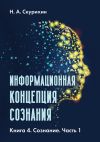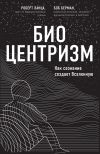Текст книги "Психология сознания"

Автор книги: Антти Ревонсуо
Жанр: Общая психология, Книги по психологии
сообщить о неприемлемом содержимом
Текущая страница: 39 (всего у книги 40 страниц)
Velmans, M. (1991). Is human information processing conscious? Behavioral and Brian Sciences, 14, 651–726.
Velmans, M. (1996). What and where are conscious experiences? In M. Velmans (Ed.), The science of consciousness (pp. 181– 196). London: Routledge.
Velmans, M. (2003). Is the world in the brain, or the brain in the world? Behavioral and Brain Sciences, 26, 427–429.
Velmans, M. (2009). Understanding consciousness (2nd ed.). Hove: Routledge.
Velmans, M., & Schneider. S. (Eds.) (2007). The Blackwell companion to consciousness. Oxford: Blackwell.
Wallace, B. A. (2007). Contemplative science. New York: Columbia University Press.
Weiskrantz, L. (1997). Consciousness lost and found. New York: Academic Press.
Wilenius, M., & Revonsuo, A. (2007). Timing of the earliest ERP correlate of visual awareness. Psychophysiology, 44, 703– 710.
Wilkes, K. V. (1988). – , Yishi, Duh, Um, and Consciousness. In A. J. Marcel & B. Bisiach (Eds.), Consciousness in contemporary science (pp. 16–41). New York: Oxford University Press.
Woody, E. Z., & Bowers, K. S. (1994). A frontal assault on dissociated control. In S. J. Lynn & J. W. Rhue (Eds.). Dissociation: Clinical and theoretical perspectives (pp. 52–79). London: Guilford Press.
Yu, L., & Blumenfeld, H. (2009). Theories of impaired consciousness in epilepsy. Annals of the New-York Academy of the Sciences. 1157, 48–60.
Zeki, S. (2003). The disunity of consciousness. Trends in Cognitive Sciences, 7, 214–218.
Zeki, S., & Bartels. A. (1999). Towards a theory of visual consciousness. Consciousness and Cognition, 8, 225–259.
Zihl, J., von Cramon, D., & Mai, N. (1983). Selective disturbance of movement vision after bilateral brain damage. Brain, 106, 313–340.
Список рекомендуемой литературы
Глава 1
Beckermann, A., Flohr, H., & Kim, J. (Eds.) (1992). Emergence or reduction? Berlin: Walter de Gruyter.
Block, N., Flanagan, O., & Güzeldere, G. (Eds.) (1997). The nature of consciousness: Philosophical debates. Cambridge, MA: MIT Press.
Broad, C. D. (1925). The mind and its place in nature, London: Routledge & Kegan Paul.
Chalmers, D. (1996). The conscious mind. Oxford: Oxford University Press.
Kim, J. (1998). Mind in a physical world. Cambridge, MA: MIT Press.
Kim, J. (2005). Physicalism, or something near enough. Princeton, NJ: Princeton University Press.
Levine, J. (1983) Materialism and qualia: The explanatory gap. Pacifi c Philosophical Quarterly, 64, 354–361.
Levine, J. (1993). On leaving out what it’s like. In M. Davies & G. W. Humphreys (Eds.), Consciousness (pp. 121–136). Oxford: Blackwell.
Nagel, T. (1974). What is it like to be a bat? Philosophical Review, 83, 435–450.
Pauen, M., Staudacher, A., & Walter, S. (Eds.) (2006). Special issue on epiphenomenalism. Journal of Consciousness Studies, 13 (1–2).
Searle, J. (1992). The rediscovery of the mind. Cambridge, MA: MIT Press.
Skribna, D. (2005). Panpsychism in the West. Cambridge, MA: MIT Press.
Velmans, M. (2009). Understanding consciousness (2nd ed.). Hove, UK: Routledge.
Глава 2
Baars, B. J. (2003). The double life of B. F. Skinner: Inner confl ict, dissociation and the taboo against consciousness. Journal of Consciousness Studies, 10, 5–25.
Finger, S. (1994). Origins of neuroscience. New York: Oxford University Press.
Freud, S. (1950). The interpretation of dreams (A. A. Brill, Trans.). New York: Random House. (Original work published 1900.)
Güzeldere, G. (1997). The many faces of consciousness: A fi eld guide. In N. Block, O. Flanagan, & G. Güzeldere (Eds.), The nature of consciousness: Philosophical debates (pp. 1–67). Cambridge, MA: MIT Press.
Hothersall, D. (2004). History of psychology (4th ed.). New York: McGraw-Hill.
James, W. (1950). The principles of psychology (Vols. 1 and 2). New York: Dover. (Original work published 1890.)
Koff ka, K. (1935). Principles of Gestalt psychology. New York: Harcourt, Brace & Co.
Köhler, W. (1947). Gestalt psychology. New York: Liveright.
Külpe, O. (1895). Outlines of psychology. New York: Macmillan.
Leahey, T. H. (1980). A history of psychology. Englewood Cliff s, NJ: Prentice-Hall.
Marcel, A. J., & Bisiach, E. (Eds.) (1988). Consciousness in contemporary science. Oxford: Oxford University Press.
Schwitzgebel, E. (2004). Introspective training apprehensively defended Refl ections on Titchener’s lab manual. Journal of Consciousness Studies, 11, 58–76.
Titchener, E. B. (1896). An outline of psychology. New York: Macmillan.
Глава 3
Banks, W. B. (Ed.) (2009). Encyclopedia of consciousness (Vols. 1 and 2). San Diego, CA: Academic Press.
Block, N. (2001). Paradox and cross purposes in recent work on consciousness. Cognition, 79, 197–219.
Chalmers, D. J. (1996). The conscious mind. Oxford: Oxford University Press.
Dainton, B. (2000). Stream of consciousness. London: Routledge.
Farthing, W. G. (1992). The psychology of consciousness. New York: Prentice-Hall.
Metzinger, T. (1995). The problem of consciousness. In T. Metzinger (Ed.), Conscious experience (pp. 3–37). Thorverton: Imprint Academic.
Revonsuo, A. (2006). Inner presence. Cambridge, MA: MIT Press.
Taylor Parker, S., Mitchell, R. W., & Boccia, M. L. (Eds.) (1994). Self-awareness in animals and humans. New York: Cambridge University Press.
Глава 4
D'Esposito. M. (Ed.) (2003). Neurological foundations of cognitive neuroscience. Cambridge. MA: MIT Press. Driver, J., & Vuilleumier. P. (2001). Perceptual awareness and its loss in unilateral neglect and extinction. Cognition, 79, 39–88.
Farah, M. J. (1990). Visual agnosia. Cambridge. MA: MIT Press.
Farah, M. J. (1994). Visual perception and visual awareness after brain damage: A tutorial overview. In C. Umilta & M. Moscovitch (Eds.), Attention and performance XV: Conscious and nonconsdous information processing (pp. 37–76). Cambridge. MA: MIT Press.
Farah, M. J., & Feinberg. Т. Е. (Eds.) (2000). Patient-based approaches to cognitive neuroscience. Cambridge. MA: MIT Press.
Feinberg, Т. Е. (2001). Altered egos: How the brain creates the self. New York: Oxford University Press.
Gazzaniga, M. S., Ivry, R. В., & Mangun, G. R. (2008). Cognitive neuroscience: The biology of the mind (3rd ed.). New York: Norton.
Heywood, С. A., & Zihl, J. (1999). Motion blindness. In G. W. Humphreys (Ed.), Case studies in the neuropsychology of vision (pp. 1–16). Move: Psychology Press.
Hodges, J. R. (2003). Semantic dementia: A disorder of semantic memory. In M. D’Esposito (Ed.), Neurological foundations of cognitive neuroscience (pp. 67–87). Cambridge, MA: MIT Press.
Humphreys, G. W. (Ed.) (1999). Case studies in the neuropsychology of vision. Hove: Psychology Press.
Rapp, B. (Ed.) (2001). The handbook of cognitive neuropsychology. Philadelphia. PA : Psychology Press.
Revonsuo, A. (2006). Inner presence. Cambridge. MA: MIT Press.
Sacks, O. (1985). The пит who mistook Ids wife for a hat. London: Picador.
Sacks, O. (1995). An anthropologist on Mars. London: Picador.
Zihl, J., von Cramon, D., & Mai, N. (1983). Selective disturbance of movement vision after bilateral brain damage. Brain, 106, 313–340.
Глава 5
Ellis, A. W., & Young, A. W. (1988). Human cognitive neuropsychology. Hove, UK: Psychology Press.
Goodale, M A., & Milner. A. D. (1992). Separate visual pathways for perception and action. Trends in Neurosciences, 15, 20–25.
Goodale, M. A., & Milner, A. D. (2005). Sight unseen: An exploration of conscious and unconscious vision. New York: Oxford University Press.
Karnath, H. O., & Hartje, W. (1987). Residual information processing in the neglected visual half-fi eld Journal of Neurology, 234, 180–184.
Köhler, S., & Moscovitch, M. (1997). Unconscious visual processing in neuropsychological syndromes: A survey of the literature and evaluation of models of consciousness. In M. D. Rugg (Ed.), Cognitive neuroscience (pp. 305–373). Cambridge, MA: MIT Press.
Làdavas, E., Berli, A., & Fame, A. (2000). Dissociation between conscious and nonconscious processing in neglect. In Y. Rossetti & A. Revonsuo (Eds.), Beyond dissociation: Interaction between dissociated implicit and explicit processing (pp. 175–193). Amsterdam: John Benjamins.
Marshall, J. C., & Halligan, P. W. (1988). Blindsight and insight in visuo-spatial neglect. Nature, 336, 766–767.
McGlinchey-Berroth, R., Milberg, W. P., Verfaellie, M., Alexander, M., & Kilduff , P. T (1993). Semantic processing in the neglected visual fi eld: Evidence from a lexical decision task. Cognitive Neuropsychology, 10, 79–108.
Milner, A. D., & Goodalc, M. A. (1995). The visual brain in action. Oxford: Oxford University Press.
Pöppel, E., Held. R., & Frost, D. (1973). Residual visual function after brain wounds involving the central visual pathways in man. Nature, 243, 295–296.
Renault, В., Signoret, J. L., Debruille, В., Breton, F. , & Bolger, F. (1989). Brain potentials reveal covert facial recognition in prosopagnosia. Neuropsychologia, 27, 905–912. Revonsuo, A. (2006). Inner presence:
Revonsuo, A., & Laine, M. (1996). Semantic processing without conscious understanding in a case of global aphasia: Evidence from auditory event-related brain potentials. Cortex, 32, 29–48.
Rossetti, Y. (1998). Implicit short-lived representations of space in brain damaged and healthy subjects. Consciousness and Cognition, 7, 520–558.
Rossetti, Y., & Revonsuo, A. (Eds.) (2000). Beyond dissociation: Interaction between dissociated implicit and explicit processing. Amsterdam: John Benjamins.
Schacter, D. L., McAndrews, M. P., & Moscovitch, M. (1988). Access to consciousness: Dissociations between implicit and explicit knowledge in neuropsychological syndromes. In L. Weiskrantz (Ed.). Thought without language (pp. 242–278). Oxford: Oxford University Press.
Tranel, D, & Damasio, A. R. (1985). Knowledge without awareness: An autonomic index of facial recognition by prosopagnosics. Science, 22H, 1453–1454.
Tranel, D., & Damasio, A. R. (1988). Non-conscious face recognition in patients with face agnosia. Behavioural Brain Research, 30, 235–249.
Volpe, В. Т., Ledoux. J. E., & Gazzaniga, M. S. (1979). Information processing of visual stimuli in an extinguished fi eld. Nature, 282, 722–724.
Weiskrantz, L. (1992). Introduction: Dissociated issues. In A. D. Milner & M. D. Rugg (Eds.), The neuropsychobgy of consciousness (pp. 1–10). New York: Academic Press.
Weiskrantz, L. (1997). Comciousness losl and found. Oxford: Oxford University Press. Young. A. W. (1994). Neuropsychoiogy of awareness. In A. Revonsuo & M. Kamppinen (Eds.), Consciousness in philosophy and cognitive neuroscience (pp. 173–203). Hillsdale, NJ: Lawrence Erlbaum Associates.
Young, A. W., & De Haan, E. H. F. (1990). Impairments of visual awareness. Mind and Language, 5, 29–48. Young, A. W, & Ellis. II. U (2000). Overt and covert face recognition. In Y. Rosselti & A. Revonsuo (Eds.). Beyond dissociation (pp. 195– 219). Amsterdam: John Henjamins.
Глава 6
Bermúdez. J. L. (2009). Self: Body awareness and self-awareness. In W. P. Banks (Ed.), Encyclopedia of consciousness (Vol. 2, pp. 289–300). San Diego, CA: Academic Press.
Feinberg, Т. Е. (2001). Altered egos: How tlie brain creates tlur self New York: Oxford University Press.
Feinberg. T. E., & Keenan, J. P. (Eds.) (2005). Tlie lost self. New York: Oxford University Press.
Firmey. J. (1976). Invasion of the body snatchers. London: Sphere.
Gazzaniga, M. S„ & LcDoux. J. E. (1976). The integrated mind. New York: Plenum Press.
Hirstein. W. (2005). Brain fi ction. Cambridge, MA: MIT Press.
Kapur, N. (1997). Injured brains of medical minds: Views from within. Oxford: Oxford University Press.
Mark, V. (1996). Confl icting communicative behaviour in a split brain patient: Support for dual consciousness. In S. R. Hameroff , A. W, Kaszniak, & A. C. Scott (Eds.), Toward a science of consciousness (pp. 189–196). Cambridge, MA: MIT Press.
Marshall. J. C, & Halligan. P. W. (1996). Method in madness: Case studies in cognitive neuropsychiatry. Hove: Psychology Press.
Phillips, K. A. (2005). The broken mirror: Understanding and treating imdy dysmorphic disorder. New York: Oxford University Press.
Ramachandran, V. S„ & Blakeslee, S. (1998). Phantoms in the brain. New York: William Morrow.
Sacks, O. (1985). The man who mistook his wife for a hat. London: Picador.
Spence, S. A. (2009). Psychopathology and consciousness. In W. P. fl anks (Kd.). Encyclopedia of consciousness (Vol. 2, pp. 245–271). San Diego, CA: Academic Press.
Глава 7
Chalmers. D. J. (2000). What is a neural correlate of consciousness? In T. Metzinger (Ed.). Neural correlates ofconsciousness (pp. 17–39). Cambridge. MA: MIT Press.
Koch, C. (2004). Tlw quest for consciousness: A neurobiological approach. Englewood Cliff s. NJ: Roberts & Company.
Revonsuo, A. (2001). Can functional brain imaging discover consciousness in the brain? Journal of Consciousness Studies, 8, 3–23.
Глава 8
Cavanna. A. E., & Monaco. F. (2009). Brain mechanisms of altered conscious states during epileptic seizures. Nature Reviews Neurology, 5, 267–276.
Laureys, S. (Ed.) (2006). The boundaries of consciousness: Neurotnology and neuropathology (Progress in Hrain Research). Amsterdam: Elsevier.
Laureeys, S., & Tononi. G. (2008). The neurology of consciousness: Cognitive neuroscience and neuropathology. San Diego, CA; Academic Press.
Yu, L., & Blumenfeld, H. (2009). Theories of impaired consciousness in epilepsy. Annals of the New York Academy of the Sciences, 1157, 48–60.
Глава 9
Kanwisher. N. (2001). Neural events and perceptual awareness. Cognition, 79, 89–113.
Koch. C. (2004). The quest fi n– consciousness: Л neumlwlogical approach. Enslewood Cliff s. NJ:
Roberts & Company. Koivisto, M., Kainulainen. P., & Revonsuo, A. (2009). The relationship between awareness and attention: Evidence from ERP responses. NeuropsychoJogiti. 47, 2891–2899.
Rees, G. (2007). Neural correlates of the contents of visual awareness in humans. Philosophical Transactions o/tlw Royal Society of London, Series B. 36, 877–886.
Revonsuo. A. (2006). Inner presence: Consciousness as a bidogical phenomenon. Cambridge, MA: MIT Press.
Silvanto. J., Cowey. A., Lavie, N., & Walsh. V. (2005). Striate cortex (V1) activity gales awareness of motion. Nature Neuroscienee, 8, 143.
Глава10
Blackmore, S. J. (2006). Conversations on consciousness. New York: Oxford University Press.
Chalmers, D.J. (1996). The conscious mind. Oxford: Oxford University Press.
Dennett, D. С (1991). Consciousness explained. Boston: Little, Brown.
Dennett, D. С (2005). Sweet dreams: Philosophical obstacles to a science of consciousness. Cambridge. MA: MIT Press.
Dretske. F. (1995). Naturalizing the mind. Cambridge. МA: MIT Press.
Gallagher, S., & Zahavi, D. (2008). The phenomenological mind. London: Routledge.
Lehar. S. (2003). The world in your head. Mahwah. NJ: Lawrence Erlbaum Associates, Inc.
Metzinger, T. (2003). Being no one: The self-model theory of subjectivity. Cambridge, MA: MIT Press.
Metzinger, T (2009). The ego tunnel. New York: Basic Books.
Noë, A. (2009). Out of our heads. New York: Hill & Wang.
O’Regan, J. K., & Noë, A. (2001). A sensorimotor account of vision and visual consciousness. Behavioural and Brain Sciences. 24, 939–1031.
Revonsuo, A. (2006). Inner presence: Consciousness as a biological phenomenon. Cambridge. MA: MIT Press.
Searle. J. R. (1992). The rediscovery of the mind. Cambridge, MA: MIT Press.
Searle, J. R. (1997). The mystery of consciousness. New York: The New York Review Books.
Searle, J. R. (2000). Consciousness. Annual Review of Neuroscience, 23, 557–578.
Туе, М. (1995). Ten problems of consciousness: A representational theory of the phenomenal mind. Cambridge, MA: MIT Press.
Velmans, M. (2009). Understanding consciousness (2nd ed.). Hove: Routledge.
Velmans, M., & Schneider, S. (Eds.) (2007). The Blackwell companion to consciousness. Oxford: Blackwell.
Глава 11
Baars, B. J. (1988). A cognitive theory of consciousness. New York: Cambridge University Press. Baars. B. J. (1997). In tlw tlieater of consciousness: The workspace of the mind. New York: Oxford University Press.
Baars, B. J. (1998). Metaphors of consciousness and attention in the brain. Trends in Neurosciences, 21, 58–62.
Block, N. (2007). Consciousness, accessibility, and the mesh between psychology and neuroseience. Behavioral and Brain Sciences, 30, 481–499.
Crick, F, & Koch, С. (1990). Towards a neurobiological theory of consciousness. Seminars in the Neurosciences, 2, 273–304.
Crick, R, & Koch, C. (1998). Consciousness and neuroscience. Cerebral Cortex, 8, 97–107.
Crick, F., & Koch, С. (2003). A framework for consciousness. Nature Neuroscience, 6, 119–126. Damasio, A. R. (1994). Descartes’ error. New York: Putnam.
Damasio, A. R. (1999). The feeling of what happens. New York: Harcourt Brace.
Dehaene, S., Changeux, J. P. , Naccache, L., Sackur. J., & Sergent, С. (2006). Conscious, preconscious, and subliminal processing: A tes table taxonomy. Trends in Cognitive Science, 10, 204–211.
Dehaene, S., & Naccache, L. (2001). Towards a cognitive neuroscience of consciousness: Basic evidence and a workspace framework. Cognition. 79, 1–37.
Edelman, G. M. (1989). The remembered present: A biological theory of consciousness. New York: Basic Books.
Edelman, G. M, & Tononi, G. (2000). A universe of consciousness. New York: Basic Books.
Fodor, J. A. (1983). The modularity of the mind. Cambridge. MA: MIT Press.
Kouider, S. (2009). Neurobiological theories of consciousness. In W. B. Banks (Ed.). Encyclopedia of consciousness (Vol. 2, pp. 87–100). San Diego. CA: Academic Press.
Lamme, V. A. (2000). Neural mechanisms of visual awareness: A linking proposition. Brain and Mind, 7, 385–406.
Lamme, V. A. (2003). Why visual awareness and attention are diff erent. Trends in Cognitive Sciences, 7, 12–18.
Lamme, V. A. (2004). Separate neural defi nitions of visual consciousness and visual attention; a case for phenomenal awareness. Neural Networks, 17, 861–872.
Lamme, V. A., & Roelfsema, P. R. (2000). The distinct modes of vision off ered by feedforward and recurrent processing. Trends in Neurosciences, 23, 571–579.
Llinas, R. (2001). I of the vortex: From neurons to self. Cambridge. MA: MIT Press.
Llinas, R. R., & Pare, D. (1991). Of dreaming and wakefulness. Neuroscience. 44, 521–535.
Llinas, R. R., Ribary, U., Contreras, D., & Pedroarena, C. (1998). The neuronal basis for consciousness. Plidosoplucal Transactions of the Royal Society of London, Series H, 353, 1841–1849.
Tononi, G. (2009). An integrated information theory of consciousness. In. W. B. Banks (Ed.), Encyclopedia of Consciousness (pp. 403–416). San Diego. CA: Academic Press.
Zeki, S. (2003). The disunity of consciousness. Trends in Cognitive Sciences, 7, 214–218.
Zeki, S., & Bartels, A. (1999). Towards a theory of visual consciousness. Consciousness and Cognition, 8, 225–259.
Глава 12
Farthing, W. G. (1992). The psychology of consciousness. New York: Prentice-Hall.
Revonsuo, A. (2009). Altered and exceptional states of consciousness. In W. P. Banks (Ed.). Encyclopedia of consciousness (Vol. 1. pp. 9–21). San Diego, CA: Academic Press.
Revonsuo, A., Kallio, S., & Sikka. P. (2009). What is an altered slate of consciousness? Philosophkal Psycliology, 22, 187–204.
Tart, С. Т. (Ed.) (1990). Altered states of consciousness. New York: Harper Collins.
Tart, С. Т. (2000). Investigating altered states on their own terms. In M. Velmans (Ed.). Investigating plienomenal con sciousness (pp. 255–278). Amsterdam: John Benjamins.
Vaitl, D., Birbaumcr, N., Gruzelier, J., Jamieson, G. A., Kotchoubey, В., Kubler, A., et al. (2005). Psychobiotogy of altered states of consciousness. Psychological Bulletin, 131, 98–127.
Глава 13
Barrett, D., & McNamara, P. (Eds.) (2007). The new science of dreaming (Vote. 1–3). Westport, CT: Praeger.
Cheyne, J. A., Rueff er, S. D., & Newby-Clark, I. R. (1999). Hypnagogic and hypnopompic hallucinations during sleep paralysis: Neurological and cultural construction of the nightmare. Consciousness and Cognition, 8, 319–337.
Domhoff , G. W. (1996). Finding meaning in dreams: A quantitative approach. New York: Plenum Press.
Farthing, W. G. (1992). The psychology of consciousness. New York: Prentice-Hall.
Foulkes, D. (1965). Dreaming: A cognitive-psychological analysis. Hillsdale, NJ: Lawrence Erlbaum Associates, Inc.
Green, C., & McCreery. С. (1994). Lucid dreaming: The paradox of consciousness during sleep. London: Routledge.
Hall, С. S., & Van de Castle, R. L. (1966). The content analysis of dreams. New York: Appleton-Century Crofts.
Hobson, J. A. (1988). The dreaming brain. New York: Basic Books.
Hobson, J. A. (1997) Dreaming as delirium: A mental status exam of our nightly madness. Seminars in Neurology, 17, 121–128.
Hobson, J. A. (2001). The dream drugstore: Chemically altered states consciousness. Cambridge. MA: MIT Press.
LaBerge, S. (1985). Lucid dreaming. New York: Ballanline.
Mahowald, M. W., & Schenck, С. H. (1992). Dissociated states of wakefulness and sleep. Neurology, 42, 44–52.
Mavromatis, A. (1987). Hypnagogia: The unique state of consciousness between wakefulness and sleep. London: Routledge.
Rechtschaff en, A., & Buchignani, C. (1992) The visual appearance of dreams. In J. S. Antrobus & M. Bertini (Eds.). The neuropsychology of sleep and dreaming (pp. 143–155). Hillsdale, NJ: Lawrence Erlbaum Associates. Inc.
Revonsuo, A. (2000). The reinterpretetion of dreams: An evolutionary hypothesis of the function of dreaming. Behavioral and Brain Sciences, 23, 877–901.
Revonsuo, A. (2005). The self in dreams. In T. E. Feinberg & J. P. Keenan (Eds.). The lost self: Pathologies of the brain and mind (pp. 206–219). New York: Oxford University Press.
Schwartz, S. (2000). A historical loop of one hundred years: Similarities between 19th century and contemporary dream research. Dreaming, 10, 55–66.
Strauch. I., & Meier, B. (1996). In search of dreams: Results of experimental dream research. New York: SUNY Press.
Uga, V. , Lemut, M. C., Zampi, C., Zilli, I., & Salzarulo, P. (2006). Music in dreams. Consciousness and Cognition, 15, 351–357.
Valli, K., & Revonsuo, A. (2009). The threat simulation theory in light of recent empirical evidence: A review. American fournal of Psychology, 122, 17–38.
van Eeden, F. (1990). A study of dreama Reprinted in С. Т. Tart (Ed.). Altered states of consciousness (pp. 175–190). New York: HarperCollins. (Original work published 1913.)
Правообладателям!
Это произведение, предположительно, находится в статусе 'public domain'. Если это не так и размещение материала нарушает чьи-либо права, то сообщите нам об этом.








































